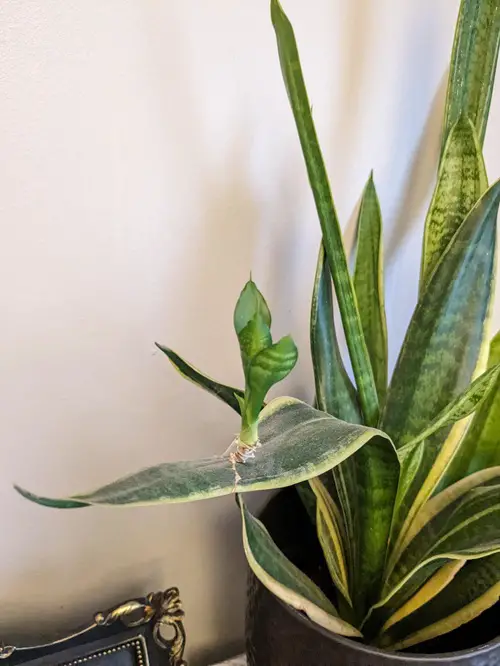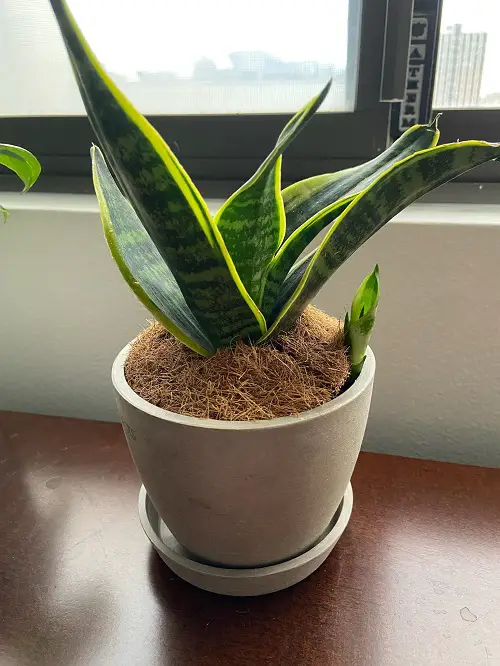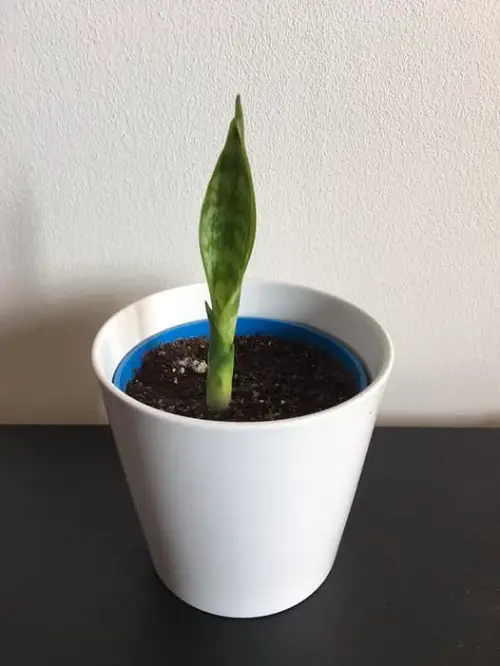Want to grow Sansevieria quickly and efficiently? Here’s How to Plant Snake Plant Pups so they Grow Better and Faster!

Snake plants produce beautiful pups that can be easily propagated and quickly turned into new plants. However, if you don’t follow the steps correctly, you can mess it all up. We share ways to grow snake plant pups, so they grow better and faster!
How to Plant Snake Plant Pups so They Grow Better
1. Pick the Right Pot and Soil

The right combination of container and potting mix will make sure that your snake plant pups thrive.
You should choose a pot that has adequate drainage holes to prevent water from accumulating at the bottom, as snake plant pups are vulnerable to root rot.
If you’re just starting, avoid glass jars and pots without drainage as they won’t allow excess moisture to drain freely and increasing the chances of overwatering.
And choose a well-draining soil mix designed for succulents. The mix should be airy and loamy and comprise perlite, coarse sand, or pumice with regular potting soil.
2. Let the Pups Callus
If you are propagating pups by cutting them off the mother plant then let the severed end dry and form a callus for a 2-3 days before planting. Here’s a great tip that you can try—dust the cut end with cinnamon powder whilst letting the pups dry.
Cinnamon’s antifungal properties prevent infections, ensuring you will have a successful propagation. You can also try a rooting hormone, especially when there are no visible roots—dip the cut end of the pup in one right before you plant it. There are also organic options like aloe or honey.
3. Plant at the Right Depth and Slightly Dry Soil

Once you’re done with the above, it is time to plant those babies. If you put them in too deep, it will cause the base to rot. And planting them too shallow leaves the roots exposed. We don’t want either of these things to happen.
When planting the pups, position them so their roots are fully buried, but keep the base of the leaves above the soil line. Also, make sure the soil is gently packed around the roots to provide support without suffocating them.
It’s also important to note that you plant them in slightly dry soil, not moist like other plants. Wait 4-7 days before your first watering. Later on, water only when the soil seems lightly dry, doing this will mimic their natural growing conditions.
Pro Tip: Before planting, add a thin layer of gravel or small stones at the bottom of the pot to create a buffer for drainage, reducing the risk of waterlogging.
4. Ensure Ideal Temperature and Humidity

When it comes to thriving snake plant pups, maintaining the perfect temperature and humidity is vital. Warm and stable temperatures will speed up your plant’s metabolic processes, while humidity will reduce stress on the pup and encourage faster growth.
After you plant these pups, keep the pots in a warm and stable temperature range of 65-90 F (18-32 C), basically your normal room temperature.
Avoid exposing them to drafts, sudden temperature changes, or cold conditions because it can affect their growth. Snake plants prefer a low to moderate humidity of about 30-50%, which is available in most homes, so you don’t have to worry about that.
If the temperature is spot-on but the air around is very arid and dry, say below humidity below 20-25 percent, place a pebble tray near the pot or group it with other plants to create a microclimate of slightly higher humidity.
Pro Tip: Light fuels photosynthesis, and with sufficient light, the pups have more energy to develop roots and leaves. Keep the pups near an east-facing window or a few feet from a south or west-facing window, and filter with curtains if the sun’s too harsh.
5. Fertilize the Pups—Carefully!
Once the pups have formed roots, within 6-8 weeks, you can boost their growth with a gentle diluted liquid houseplant or succulent fertilizer with an NPK ratio of 10-10-10 for general nutrition or one with lower nitrogen levels. Here are the best options!
However, you don’t want to overwhelm these babies with too much feed! Remember to dilute it to half or even one-quarter of the recommended strength to prevent overfeeding.
Pro Tip: If you want to go all organic, use compost tea, banana peel tea, or diluted fish emulsion to feed your plant. And feed it every 4-6 weeks during its growth phase, once established.


